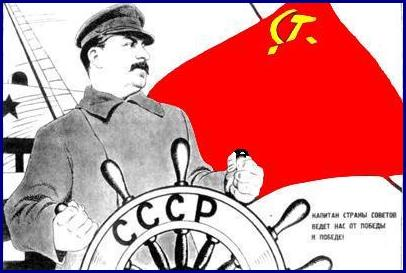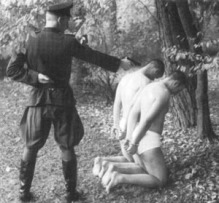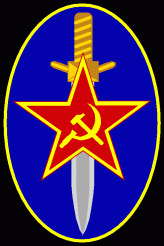GOVERNMENT
Background

The U.S.S.R was an association of all the Soviet Republics, and based on the idea of voluntary centralism.
The Federal Government exercised complete authority in matters relating to the central administration of Russia, ex. armed defense, transport and communications, foreign relations, and political security. The Federal authority also had the power to supervise in order to secure coordination and uniformity in laws and regulations dealing with the economy, labor classes, and the overall well being of its citizens.
The basis of the representative government rested upon the Soviets, otherwise known as elective councils. The Soviets were councils of delegates and was designed to directly represent the productive life of the country. Each village in Russia would elect a local Soviet, and from there an executive committee would be elected, which would have jurisdiction over the Soviets.
Stalin enacted his constitution in 1936, which was fairly progressive. The constitution was designed to allow the largest possible degree of self-government and cultural development for the various national groups. Under Stalin’s laws, the groups were free to preserve their distinctive customs, institutions, and languages.
The Great Purges

Stalin used the purges to gain power and control in the Soviet Union, by literally obliterating anyone that stood in his way. In 1934, Stalin began his quest for absolute power by using the assassination of Sergei Kirov as a justification to commence the Great Purges. Stalin went after his suspected opponents, many old members of the Bolshevik party.
Stalin had already eliminated his number one opponent Trotsky in 1929, when he expelled him from the Soviet Union forever. Trotsky was later murdered by one of Stalin’s assassins in 1940. But Trotsky certainly wasn’t the last of Stalin’s suspects, thousands more would be murdered later on in the name of the Soviet Union. Many executed were senior party members blamed with conspiracy and sabotage. Stalin used these men as scapegoats for his own downfalls, including industrial accidents and production shortfalls. Stalin not only destroyed his opponents, but his allies as well, including Zionviev and Kamenv, accused of being behind Kirov’s assassination and planning to overthrow Stalin.
The period between 1936 to 1937 is called the Great Terror, due to the thousands of people imprisoned or killed when even merely suspected of opposition. Violence and injustices became commonplace in society, such as the practice of mass arrest, torture, and execution without trial. During the Great Terror, the NKVD’s toll of those killed was 681,692, with 40,000 of them signed by Stalin himself. While many were killed and assassinated, a great number of suspects were also sent to brutal work camps, called gulags.
Stalin appeared to gain his power not from the people, but from his secret police and body count. He secured his dictatorship not through support from the people, but unabashed terror and fear.
NKVD and Secret Intelligence

During his reign, Stalin significantly increased the power of the NKVD and intelligence agencies. The NKVD was the leading secret police organization, held responsible for many of the persecutions and terror in the Soviet Union. With the help of Stalin, Russian intelligence began setting up networks in the most powerful countries from all over the glob, including the United States, Germany, and France. Stalin took full advantage of the Communist International movement to infiltrate agents, to guarantee that foreign Communist parties and leaders remained pro-Stalin.
Known for his brutal politics and policies, Stalin saw no difference between illegal state actives and legal ones. So he used the NKVD for espionage, state-sanctioned violence, and communist political propaganda actions.
